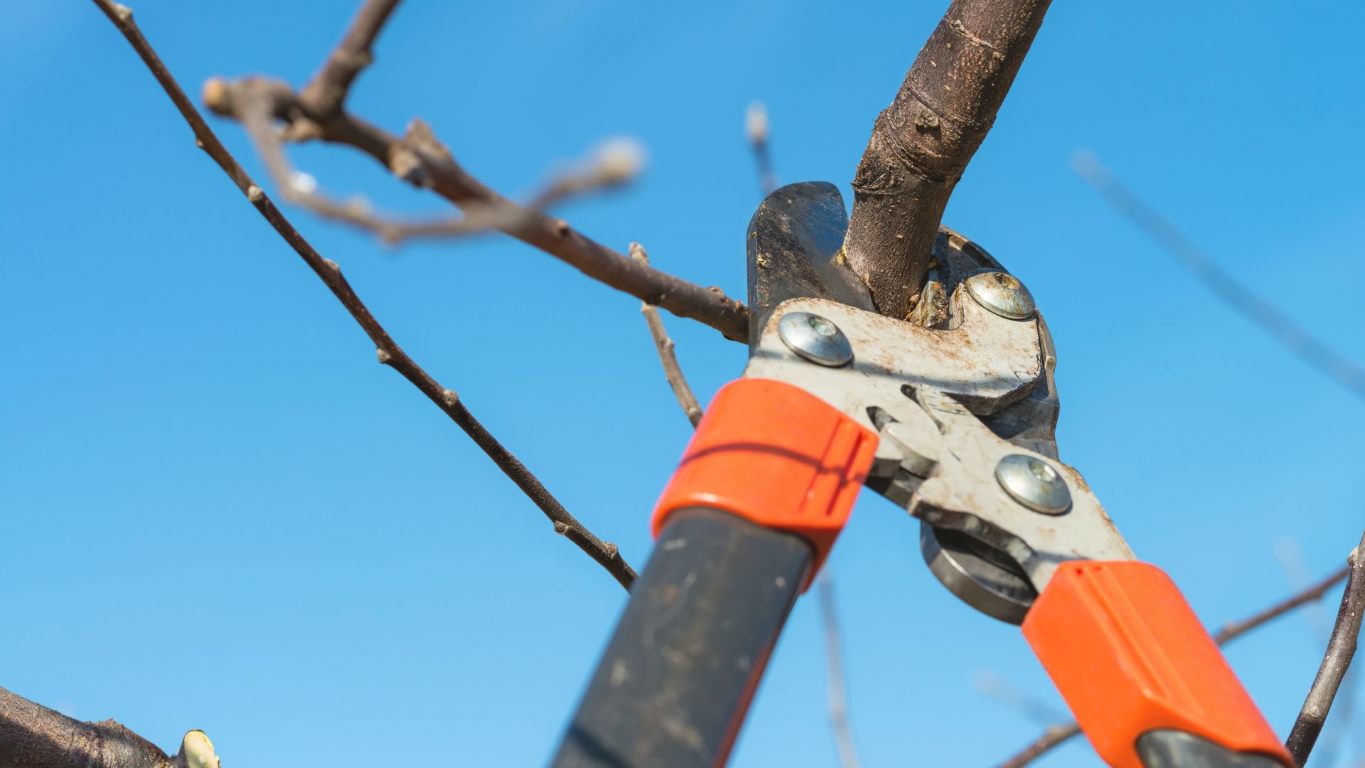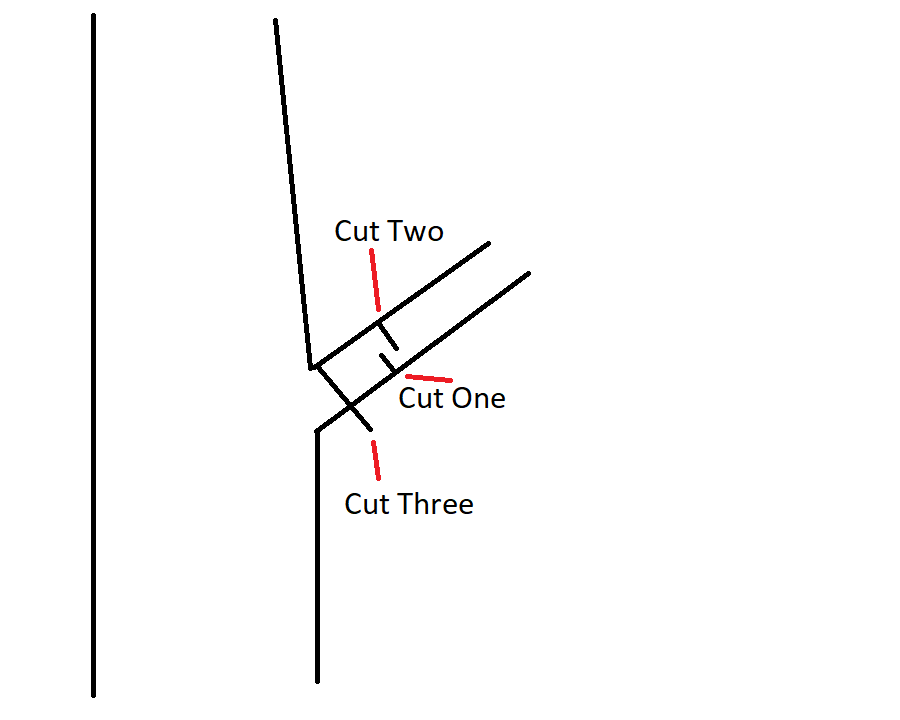
There comes a time when most of us make a mistake when pruning trees. This can be due to a lack of knowledge or a simple misjudgement. After years of pruning trees, I still make mistakes. If you have given your tree a bad prune, all hope isn’t lost. There are ways to fix your tree so you can avoid harming or killing it.
Without further ado, here’s how to fix a badly pruned tree.
First, Know Your Species
All tree species are different and will have different reactions to pruning. Therefore, there isn’t a one size fits all solution to correcting bad pruning. What works for one tree may have the complete opposite effect on another.
Identifying your particular tree species is the first step to fixing a pruning mishap. If you already know what species of tree you have, great! You’ll need to Google that species and its growth habits. This should give you a good guide to how your tree will grow back. Be prepared as your tree might not grow back at all.
For example, some conifers won’t grow back at all. Once you’ve made that cut, there will be no re-shooting. In these situations, it’s best to clean the stub and move on.
If you don’t know your tree species, you can find out which tree you have by using a tree identification app. The app I like to use is Seek by iNaturalist. Check out their site here for more information.
You can also Google key identifiers and work through the results or images until you find your tree. This method can work, but you may not always get accurate results.
Some key identifiers are:
- Leaf Type
- Bark Color
- Bark Type
- Tree Size
- Tree Shape
- Fruit Type and Layout
Once you have found your species and its growth habits, you will have an idea of how your tree is going to react to your pruning.
You may find your tree will send shoots everywhere, or it may never grow back. But, on the other hand, it may be a slow grower or have no issues growing back at all. Knowing this will help you understand which steps to take to rejuvenate your tree.
Now let’s move on to the actual methods of fixing a tree.
How to Fix a Badly Pruned Tree
Consider Waiting For Your Tree to Grow Back
Many trees will grow back in some way after a prune. So, a straightforward solution is to wait for your tree to grow back again. It’s not the most thrilling method, but it can work.
Remember, some trees won’t grow back at all. So, make sure to double-check your tree species’ growth habits.
If you are going to use this method, make sure to assess your tree. You want to make sure there are no dangerous limbs in the canopy. Some examples of dangerous limbs are:
- Snapped limbs sitting in the canopy
- Limbs that look like they are about to give out
- Split limbs
- Limbs that are bending due to excess weight
Safely remove these limbs first. There’s no point risking an accident. If you can’t remove them yourself, try calling an Arborist.
If you’ve over-pruned your tree, it will become stressed. Fixing poor pruning with more pruning can be counterproductive to your tree’s health.
One general rule of thumb is to wait until your tree has grown back to its original height. This should take some time, giving your tree some rest and time to heal.
After this, it’s possible to start pruning your tree again, enabling you to shape your tree how you like.
Remove Any Deadwood
If you decide you need to prune your tree, start by removing deadwood.
Deadwood is parts of the tree that are dead. Sometimes this can be whole limbs, other times only small sections. Regardless, too much deadwood can make a tree canopy messy and hard to manage.
Removing deadwood will allow you to see more of the living tree. Once you can see the canopy better, you can decide what else you need to prune. In addition, working with a clean canopy will make it easier to plan your next steps.
Be mindful of dead limbs dropping. When these limbs hit the ground, they shatter into tiny pieces. Not only does this cause a big mess, but these small pieces can strike and injure you. Make sure you wear safety glasses to protect your eyes.
Remove Crossing or Rubbing Branches
Now with the deadwood gone, you will be able to look throughout your tree’s canopy. Start by looking for branches that are crossing or rubbing. You’ll want to remove these branches.
Removing crossing or rubbing branches can help in two ways:
- It will improve airflow throughout the canopy
- It will allow more sunlight to penetrate the inner leaves
Airflow will help prevent the growth of fungus and bacteria. The last thing you want for a stressed tree is more stress.
Sunlight is great because it will help your tree with photosynthesis. The more leaves that have access to light, the more food, and energy your tree will get. This will give your tree a much-needed health boost.
So, if your tree has no nasties and has access to nutrients, it should heal much faster. Faster healing will help any wounds heal over with minimal chance of infection.
Clean Up Wounds
If the cuts you have made on your tree are terrible, you may need to fix them immediately.
You should leave a nice, clean stub that doesn’t stick out too much when pruning a branch. Branches that stick out too much can cause water pooling in the branch fork. Pooled water can leave your tree open to rot and fungus.
So, you want to be cutting at growth points and cutting at an angle that lets water run off the stub. Make sure you try to leave the smallest wound possible too. A small, clean-cut will allow your tree to heal with a reduced chance of infection.
You also do not want to be flush cutting your limbs. Flush cutting is when you prune a limb too close to the trunk or main branch. In this scenario, there is no stub at all. Flush cuts create large wounds that take much longer to heal.
If you flush cut your tree, there isn’t too much you can do. You’ll need to leave the tree alone and let it try to heal on its own.
A tree won’t heal as a human does. Instead, trees will section wounds from the rest of the tree, using a process called CODIT. Learn more about CODIT here.
The best method for cutting a limb is the three-step method. This method will prevent tears, giving you a cleaner cut.
Here’s how to perform the three-step cutting method:
- Perform an undercut
- Cut through the branch a couple of inches in front of your undercut
- Remove the remaining stub
Check out my diagram below for any clarity.

Perform Rejuvenating Pruning
Rejuvenation pruning is the act of pruning older limbs to make way for new, stronger growth. There are two ways to go about rejuvenation pruning:
- Prune hard
- Prune gradually
Which road you take will depend on how bad your tree is. In most cases, I would opt for gradual pruning. Remember, your tree is already stressed; try not to make it worse.
This method is more beneficial if your tree has lots of weak and diseased limbs. Once those limbs are gone, the new growth will have room to grow. All the new growth will improve your tree’s strength and health.
The best time for rejuvenation pruning is Spring.
Establish a New Leader for Topped Trees
Topping a tree is when someone cuts the tree’s main leader, along with any upper branches. Some people do this because they think it will stop the tree from growing tall, making it easier to maintain. Unfortunately, this is not the case. Topping a tree can kill or permanently change its shape.
Topped trees are common under power lines. Line clearers need to cut trees to meet their clearances. Topping is usually their preferred method. Though, notice they need to come back every few years to top the tree again?
The changing of shape occurs when the tree shoots many sprouts from each cut. Once these sprouts establish, the tree will look messy and be a lot harder to manage.
If your tree has been topped, the best way to fix it is by establishing new leading branches. Naturally, the leading branches will be the taller, stronger branches.
Once the new sprouts have had some time to establish themselves, remove the ones that appear weak. Do this over the next few years until your tree starts to resemble its original shape.
Did You Know…
Hyperion, the tallest tree in the world, suffered from animal-inflicted pruning. Experts believe the tree was topped early in its life, restricting some growth. Yet, Hyperion still recovered to take out the title of World’s Tallest Tree by growing to 380.1 ft. If you want to learn more about Hyperion and his species, check out this article.
Water and Fertilize
Some good old food and water can do wonders for a struggling tree. However, sometimes the most basic method can be the most effective.
Giving your tree water every few days will keep it hydrated. In addition, this will provide your tree with a fighting chance at re-establishing its health.
A general recommendation is to give your tree three buckets of water a week. However, you may need to adjust depending on your climate. For example, consider more water during the Summer if you live in a hot and dry area.
Fertilizing your tree can be another great addition to a maintenance schedule.
To be effective, you should have your soil tested. Having your soil tested will provide you with a breakdown of all the nutrients and minerals in your soil. Again each tree has different requirements.
Knowing what’s in your soil and what your tree needs will help you pick the right fertilizer. This method will allow you to give your tree precisely what it needs, filling any nutrient gaps. You will also save money by eliminating trial and error.
Young trees need fertilizer annually, but mature trees only need it every few years. Sick trees may differ, so it’s best to check your fertilizer’s instructions.
If All Else Fails, Consider Tree Removal
There are instances when a tree is too damaged and will be unable to heal or regrow. Unfortunately, sometimes in this instance, it’s best to remove the tree and start again.
If you are having trouble making this decision, a professional Arborist can help. They will be able to take an in-depth look at your tree and tell you the best course of action.
If tree removal is the only real option, you can always replant it with a new tree or two. If this happens, you will hopefully avoid previous mistakes and grow a lovely healthy tree.
Another option for dead trees is habitat. At work, we have often kept a dead tree so wildlife can inhabit the structure. Habitat trees can be a great way to introduce birds and animals into your garden.
Above is one of my masterpieces. I was pruning for footpath clearance and got too ahead of myself. I was not able to save this one.
Well, that’s it from me. I hope you’ve learned something and now can fix any mistakes you make when pruning trees.
Whatever you do, DON’T seal the wound of a tree with anything.
